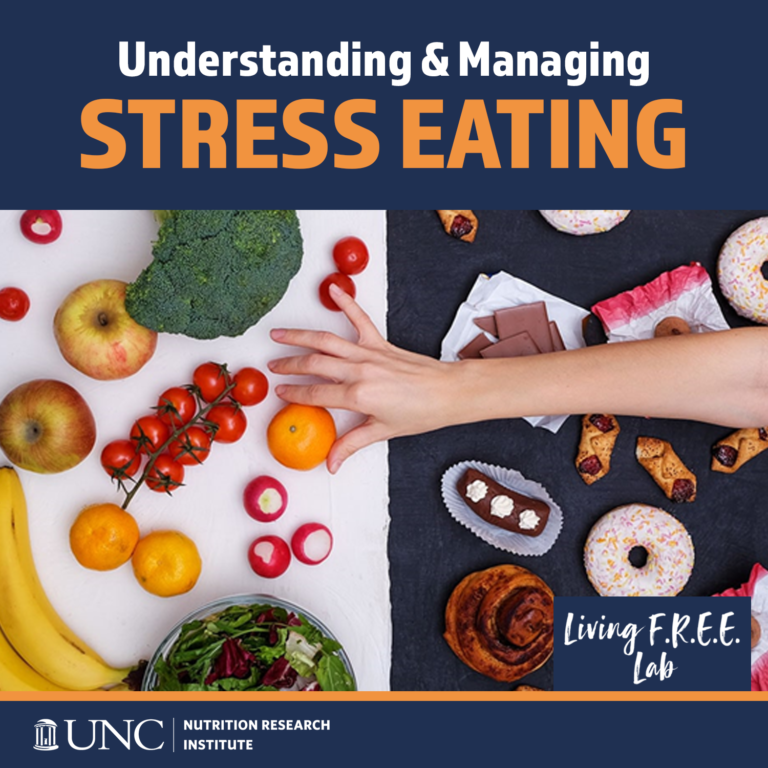by Irene Wang
Originally published by the Living F.R.E.E. Lab
During stressful times, many people reach for something crunchy, salty, or sweet – food that’s easily accessible and full of flavor, even when hunger isn’t the reason. While this is a common response, it’s helpful to pause and consider strategies for managing stress eating more mindfully before grabbing the next snack.
Stress eating often occurs due to biological and psychological factors. When stress is experienced, the body releases cortisol, a hormone that triggers cravings for sugary, salty, and fatty foods. Comfort foods activate the brain’s reward system, providing temporary relief. Psychological triggers also contribute, as eating can become a way to cope with emotions like boredom, loneliness, or anxiety.
Addressing stress eating involves managing both emotional and physical triggers. Practicing relaxation techniques, such as yoga, meditation, or light exercise, can help reduce stress levels and curb the desire to eat for emotional reasons.
Mindful eating offers another effective approach to manage stress eating. It involves slowing down and fully engaging with food through all the senses, helping to achieve satisfaction and reducing the likelihood of overeating. The following steps can be integrated into mindful eating practices:
- Begin by selecting a small portion of food, directing complete attention to it.
- Observe the appearance of the food closely, noting its shape, color, and texture.
- Take in the aroma without judgment.
- Feel the texture of the food with the hands, exploring its qualities.
- Slowly bring the food to the mouth, noting any sensations the body produces in anticipation.
- Place the food on the tongue and let it sit momentarily, paying attention to the flavor, texture, and the urge to chew or swallow.
- Chew slowly, savoring each bite, and remain present throughout the experience.
In addition to mindfulness, opting for healthier alternatives to typical stress foods can be beneficial. For example, replacing chips with crunchy chickpeas or choosing apple slices with peanut butter instead of sugary snacks can help satisfy cravings in a more balanced and nutritious way. Other ideas include tortilla chips, hummus with vegetables, or dates with peanut butter.
Staying connected with a support system of friends or family is also crucial. Often, food is used to cope with feelings of isolation. Reaching out to someone when feeling overwhelmed can provide the comfort needed without relying on food.
While stress eating is a natural response to emotional discomfort, it’s important to manage it before it becomes a habit. Taking time to explore different strategies and taking action can help break the cycle of stress eating.

